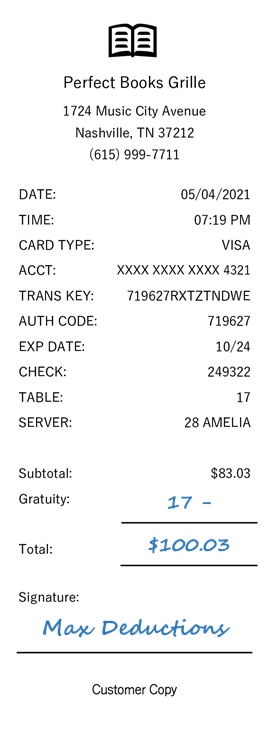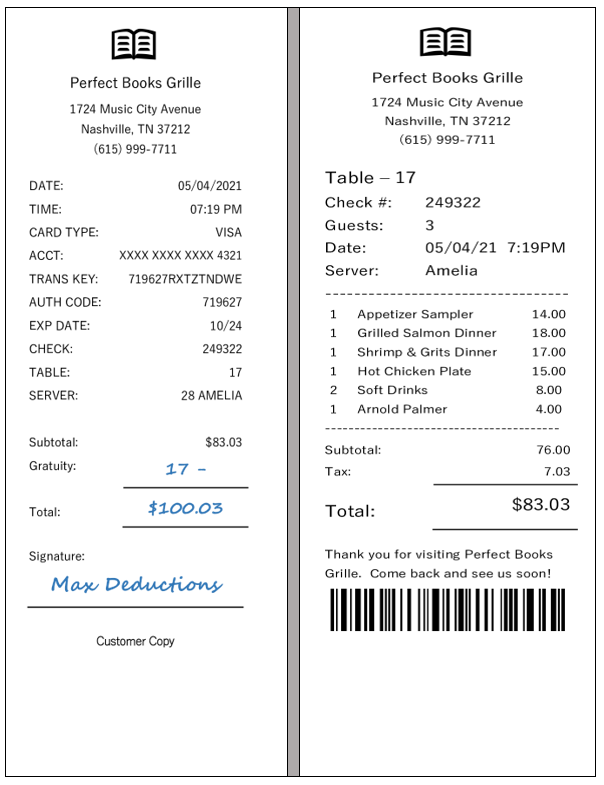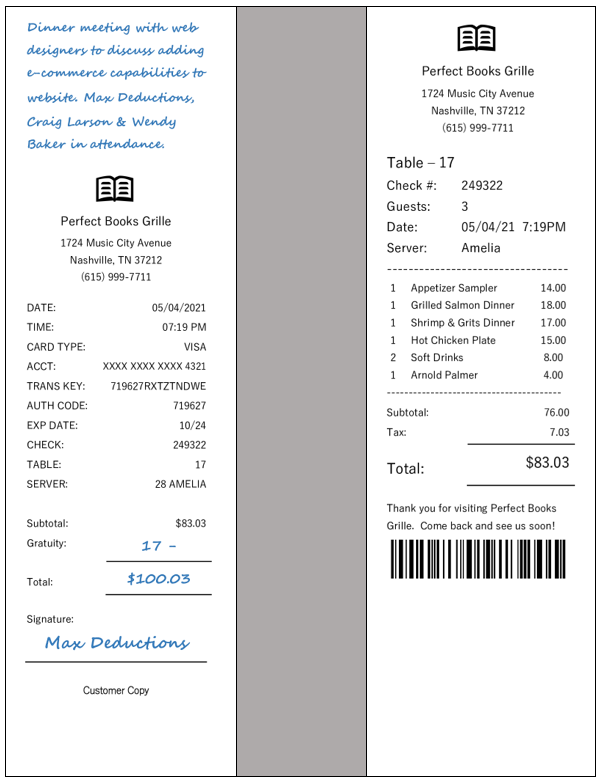Mastering The Sport Of Receipt Wrangling
It’s hard to imagine that the key to the accuracy of your tax return may very well depend upon a collection of crumpled slips of white paper, but the reality is certainly true in the minds of the Internal Revenue Service. From what seems like the dawn of modern American taxation laws, many small business owners have struggled with the responsibility of consistently capturing and storing the evidence of their business expenses.
Years ago, we only had to worry about those cash register receipts that were spit out after every in-store transaction. But now, receipts can be distributed in other ways like via email, vendor dashboard downloads or even text message. With all of these avenues varying by vendor, how can a small business owner keep track of it all? The secret lies in having a reliable system in place.
THE EXPECTATIONS OF THE INTERNAL REVENUE SERVICE
In general, the IRS considers business expenses to be tax deductible. Therefore, approved business expenses offset your taxable income and reduce your overall income tax obligation. This is one of the fundamental benefits of owning a small business. With this advantage, however, comes the Internal Revenue Service’s expectation that small business owners will only claim legitimate business expenses that qualify for deductibility.
According to the Internal Revenue Service in Publication 535, a deductible business expense must be both “ordinary and necessary.” Ordinary expenses are those that are common and accepted in your industry and necessary expenses are those that are helpful and appropriate for your particular business. Some common deductible business expenses include rent or lease payments, payroll, consumable supplies, interest, marketing, taxes and insurance.
To motivate business owners to follow the rules associated with properly accounting for business expenses, the Internal Revenue Service has equipped itself with a powerful tool to encourage compliance – the audit. This time-consuming, detailed process allows the Internal Revenue Service to review the expenses you have claimed as deductible business expenses to assess their legitimacy and accuracy. If you cannot substantiate expenses to the satisfaction of the Internal Revenue Service, the expenses will no longer be considered deductible.
So why might this be important? Well, any expense disqualified by the Internal Revenue Service will have a direct effect on your net profit. When you remove these expenses from your books, your profit will subsequently increase assuming all things remain the same. What compounds the problem is that it will result in a situation where you have underreported your profit on your audited tax return which means you didn’t pay enough income tax. Now, not only will you have to pay the additional tax due but you will also have to deal with the consequences of it being paid late which means you will likely be subject to fines and interest penalties on the amount of net income you didn’t report accurately. It’s a problem you definitely want to avoid.
EXPENSE SUBSTANTIATION – THE BASICS
Deductible business expense substantiation is critical to a small business owner’s chances of surviving an IRS audit as it provides the background and rationale for the incurred expense. Typically, expense substantiation comes in the form of receipts or invoices. For expenses, the IRS requires that all supporting documentation include the following:
- The payee (who you purchased the item or service from)
- The amount that you paid
- The method of payment that you used
- The date the expense was incurred
- A description of the item or service that shows why it would qualify as a business expense
Some business expenses require additional details. Examples include:
- Business Meals (Include the names of the attendees and the business purpose for the meal)
- Rideshare Expenses (Include your destination and the business purpose for the trip.)
- Gifts (Include recipients name and their relationship to the business.)
- Lodging (Include dates of stay and the business purpose for the hotel stay.)
- Parking (Include location and the business purpose for incurring the parking expense.)
Be sure that when you store copies of these receipts, you record the additional details needed so you don’t have to try to remember the circumstances surrounding the expense if you go through an audit years later.
DEMYSTIFYING RECEIPT PRESENTATIONS – THE BUSINESS MEAL
Since meal receipts are quite common, let’s take a look at how these are often presented for substantiation purposes. Most meal receipts are consistent with one of these three types:
THE “AT LEAST I GOT ONE” RECEIPT
Look familiar? This meal receipt is usually just the signature portion of the credit card receipt that shows the date, dining establishment, payment method and total along with the cardholder’s signature. This is the most common type of business meal receipt unfortunately.
THE “OH…SO CLOSE” RECEIPT
Presenting this type proves that the cardholder knows what slips of paper to keep after signing for the total at a restaurant, but it still falls just a bit short. It is an improvement over the single signature slip in that it includes the itemized portion of the bill which shows all of the items ordered and their corresponding prices. However, it doesn’t include those added details about the meal that the IRS requires such as who was there and why you were meeting. This is certainly a better option than the first, but there is room for improvement.
THE “MIC DROP” RECEIPT
The cardholder that presents this receipt is a true hero in the minds of the IRS. This receipt includes the signature slip, the itemized food and drink bill as well as notes confirming who was in attendance and the business purpose of the meal. Receipts presented and stored in this manner give business owners reason to feel confident in their expense substantiation protocols and training. Simply store them digitally and forget about them. Job well done!
ARCHIVING YOUR RECEIPTS – THE FINAL ACT
So far, we’ve covered why expense substantiation is so important, what information you need to gather from the businesses your company patronizes as well as when and what additional details the IRS may want you to record. Now what? You need to keep the information safe and secure so you can quickly and easily access them in the event of an IRS audit.
This means scanning and attaching digital copies of your receipts and invoices to the corresponding transactions in QuickBooks Online or utilizing a receipt capture application to take a picture of your receipt or invoice to allow the expense transaction information to be seamlessly and securely pushed directly to QuickBooks Online where it can then be posted to your general ledger.
For some small businesses, they like to attach the appropriate receipt or invoice to the applicable transaction in QuickBooks Online and also store it digitally in a separate internal or cloud-based repository. The process is one of personal preference so long as the data is safe and accessible.
QuickBooks Online has a receipt capture functionality that allows you to use the QuickBooks Online app to upload pictures of receipts that you take using your mobile device. These receipts are then listed “For Review” in your accounting system. While pending review, you can verify the proper account to post the expense to as well as add any other details that you want before it is posted to your books.
For more enhanced receipt capturing functionality, there are third-party applications that integrate with QuickBooks Online and often provide a more customized approach. These applications have more streamlined and organized client interfaces and are generally much more visually appealing in presentation and structure. They also often provide archiving features within the application which allow for quick and easy online storage of any receipts or invoices submitted through the application.
Keeping track of receipts and invoices to substantiate business expenses is an obligation that most small business owners would rather ignore, but the consequences of doing so can be perilous if you are ever faced with an IRS audit. To achieve peace of mind, it’s important to understand what the IRS requires and implement a system that makes the process of expense substantiation simple, fast and efficient for you and your employees. Taking the time to develop a routine for handling business expenses will save you time and money down-the-road – something all small business owners can appreciate.




